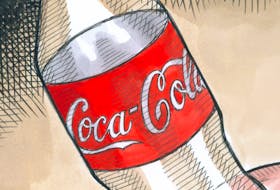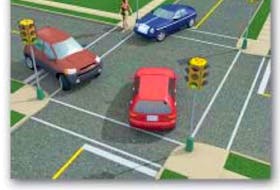By Barry Gander
When Blockbuster Video disappeared, people in rural areas had few options to turn to for movies. The story of Blockbuster’s fall is a lesson in the impact of high-speed communications – it not only leaves those without networks behind, but actively eliminates traditional physical alternatives.
At a store in Hawaii at 11 p.m., Nov. 9, 2013, the video rental giant Blockbuster rented its last video. Appropriately, the DVD was a black comedy called “This Is the End.”
Blockbuster’s own end came suddenly. While traditional business books pay great attention to shifts in loyalty and new management models, the truth is simpler and brutally basic: the blistering new speed of an evolving communications network allowed a lurking competitor to swallow the market. The video rental store fell victim to an innovation: a rise in the capability to deliver video over new high-speed online networks.
The innovation knocked politely on Blockbuster’s door. In 2000 the founder of the fledgling company called Netflix, Reed Hastings, flew to Dallas to propose a partnership to Blockbuster CEO John Antioco and his team. The idea was that Netflix would run Blockbuster’s brand online and Antioco’s firm would promote Netflix in its stores. Hastings got laughed out of the room, and Blockbuster did not bother pursuing the NetActive alternative.
We all know what happened next. Blockbuster went bankrupt and Netflix is now a $28 billion dollar company, about 10 times what Blockbuster was worth. A lesson here is that there was a path ahead for Blockbuster, which it refused to take. But you can’t hide from technology.
Blockbuster’s weakness was an artifact of its existence as a physical store: customers had to return physical videos to the physical store. Blockbuster earned enormous amounts of money by charging its customers late fees. The story goes that Hastings decided to start Netflix after being fined $40 at a Blockbuster store for being late to return a copy of Apollo 13. Blockbuster’s business model relied on late fees. Hastings’ new business rented out DVDs through the mail, from an online catalogue.
No one at Blockbuster asked what would happen if a DVD didn’t need to be returned, and therefore no late fees.
With its rising experience in online sales, Netflix was poised to take advantage of this flaw. For years, Netflix gained experience with a model that relied on the mail system to send out videos that people selected online. In retrospect, at this stage the Netflix model was a hybrid online-meets-the-real-world model, still relying on a physical system to send out videos. At first, it was a slow-growing business. Waiting for Netflix DVDs to come in the mail was slower than driving to Blockbuster.
Yet at the same time, the Netflix video selection was enormous, and by eschewing retail locations, Netflix lowered costs. If a delivery system came along that was faster than the drive to Blockbuster, a revolution would be underway.
The increasing communications speed opened up by the extension of fibre optic networks suddenly made it possible to actually deliver video content online! This was accelerated by advances in compression technology allowing large video files to be easily streamed over the internet.
These developments set the technological stage for Netflix to evolve its business from DVDs-by-mail to a completely online video streaming service. “Streaming” meant that television programs and movies could be delivered on demand, instead of the old TV model of waiting until a program was “on.”
By 2010, Netflix's streaming business had grown so quickly that within months the company had shifted from the fastest-growing customer of the United States Postal Service's first-class service to the largest source of internet streaming traffic in North America.
On Jan. 22, 2018, the company crossed $100 billion in market capitalization, becoming the largest digital media and entertainment company in the world.
The new communications network put everyone in control of their own world of content. Internet distribution allows Netflix to serve different audiences simultaneously and separately, creating clusters of original programs for different audiences. Digital feed-back allows Netflix to gather information about subscriber behaviour, for instant content adjustment.
Blockbuster had no chance. And this is not a random story about the movie business: the end also came to other companies in other sectors. “Toys R Us” fell victim to online access to toys plus a new trend to online gaming that destroyed the traditional toy market. Again, physical alternatives shrank for people without a network.
Without access to high-speed internet service, rural residents also have no chance. It is not just that they can’t get access through convenient online service, but that often they can’t get anything at all! Entertainment that goes online, disappears from stores. Government services like pre-natal care that are switched from live sessions to online platforms, leave rural parents with no options. Businesses that can’t send forms to government departments online are left behind. This is the overlooked crises arising from our poverty in rural internet delivery: the active removal of social and economic life, from fellow citizens who are growing our food, supplying our timber, catching our fish, and sustaining our environment.
And It goes without saying that if you aren’t on the network, you aren’t likely to be originating any new businesses in today’s world of commerce.
Rural communities, working with supporting governments, need to start now to Improve rural broadband, or the next blockbuster to fail, could be our province.
Barry Gander is Co-Founder, i-Valley VP, i-Canada; EVP, recipient of Canadian Advanced Technology Alliance and Queen Elizabeth II Diamond Jubilee Medal








